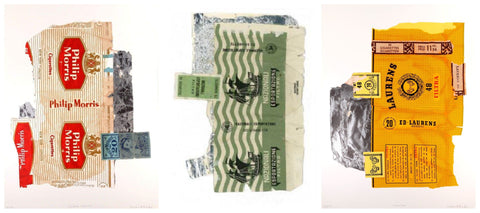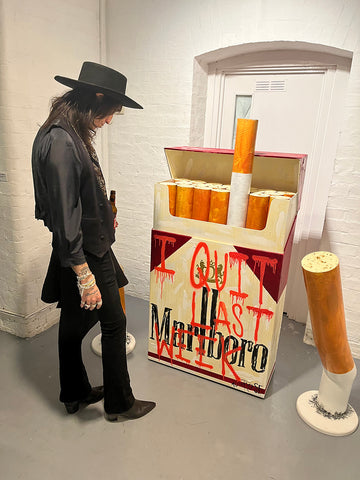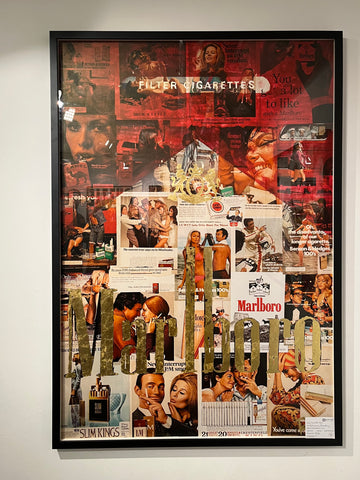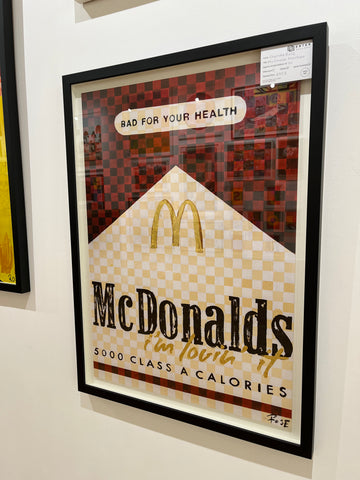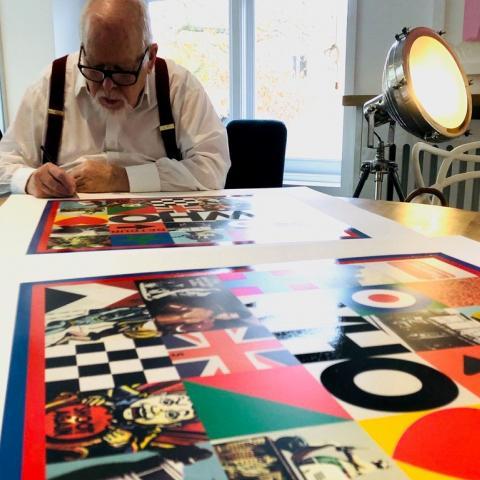While we all know they’re wildly addictive and undeniably deadly, most of us have been raised on cultural depictions of cigarettes being portrayed as the epitome of glamour and cool. Whether in the hands of Hollywood icons like James Dean and Marilyn Monroe or music legends like John Lennon and Frank Sinatra, tobacco’s place in popular culture is enormous.
As far back as the Mayans (around AD 250), artists have been portraying smokers. More recently, a number of leading artists have turned to tobacco in their work, whether to comment on its addictive qualities or to use cigarettes themselves as an artistic medium in their own right.
We've been looking back at some of the most impressive uses of tobacco in art and providing a glimpse at a couple of Enter Gallery artists who’ve explored nicotine’s enduring allure. Perhaps you might be inspired to create a masterpiece next time the craving hits…
Sarah Lucas – Christ You Know it Ain’t Easy
YBA, Sarah Lucas crafted Christ You Know It Ain’t Easy – a sculpture of Jesus made entirely from cigarettes - as a comment on how difficult she’s found it to nip the habit in the bud. After first picking up a cigarette at the tender age of nine, the enfant terrible went on to have a two-pack-a-day habit.
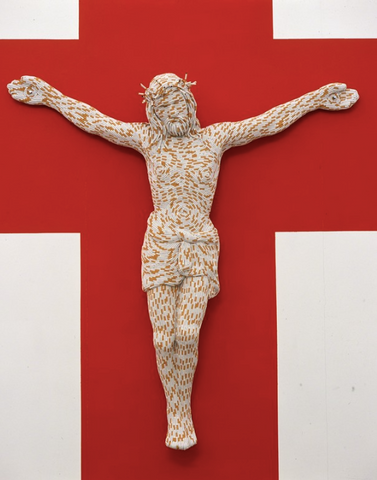
Upon deciding to quit cold turkey in 2000, Lucas channelled her love for Marlboro Lights into her art, create her holy sculpture, and a series of other works that involved gluing unlit cigarettes onto objects. Since then, Lucas has crafted everything from cherubs and toilets to dogs and gnomes from cigarettes.
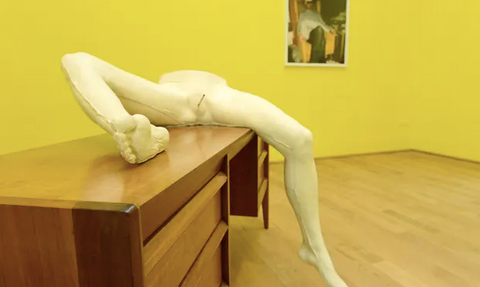
Her Life’s A Drag (Organs) sculpture depicted the gnarled shells of two cars covered in cigarettes, positioned to represent the artist’s lungs, and at the Venice Biennale in 2015, Lucas raised a few eyebrows with her smoking vaginas.
Xu Bing - Tobacco Project
Xu Bing is a Chinese artist who has explored our relationship with tobacco in a number of his artworks. Speaking of what interested him about the topic he explained:
'Humans and tobacco exist in a very strange relationship . . . I have always thought that it is like the relationship between lovers. It is very awkward, but also very much a relationship of dependence.'
His best known piece is a tiger skin rug crafted from 500,000 cigarettes. The piece explores the production and culture of tobacco, global trade and exploitation, and the ironies of advertising a harmful substance.
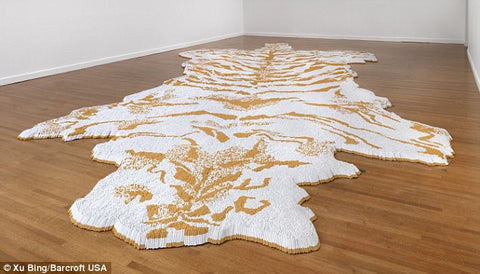
The rug was the first piece in Bing’s Tobacco Project trilogy, which also featured Tobacco Book - a gigantic book made entirely from tobacco leaves that was gradually devoured by beetles over the course of the exhibition.
Next, a piece called, Travelling Down the River, involved laying a 30-foot cigarette on top of a reproduction of classical Chinese painting, Along the River During the Qingming Festival. As the cigarette burned, it left scorch marks on the painting, ‘inscribing time as a serpentine scar and the journey as a residue of ash.’
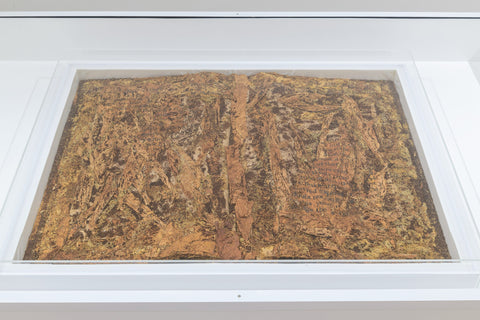
Here are a couple of examples of Enter Gallery artists who have used cigarette branding in their art.
Sir Peter Blake
If Peter Blake is known for anything, it’s borrowing from popular culture in his art, and whether we like it or not – cigarettes are a huge part of that.
Blake first used cigarette packets in his Found Art series, inspired by the idea that even basic items can be transformed into fine art. Rather than opting to depict major commercial brands like Warhol, Blake uses found objects most would toss aside.
In the series, Blake highlights iconic cigarette branding from the 20th century. His well-worn, flattened cigarette packets are enlarged with the help of digital technology. With every crease and crinkle accentuated, Blake encourages us to consider the beauty to be found in everyday objects.
Charlotte Rose
Charlotte Rose is a self-taught artist whose art explores nostalgic branding from the late 20th century, and the dreams sold to us by ad companies, all in the name of flogging poisonous goods.
By blending iconic cigarette brands like Marlboro, Camel and Gauloises with her own writings and friendly figures from pop culture, Rose explores the beauty, confusion and hypocrisy of the brands who do their best to avoid admitting that they’re killing us softly.


